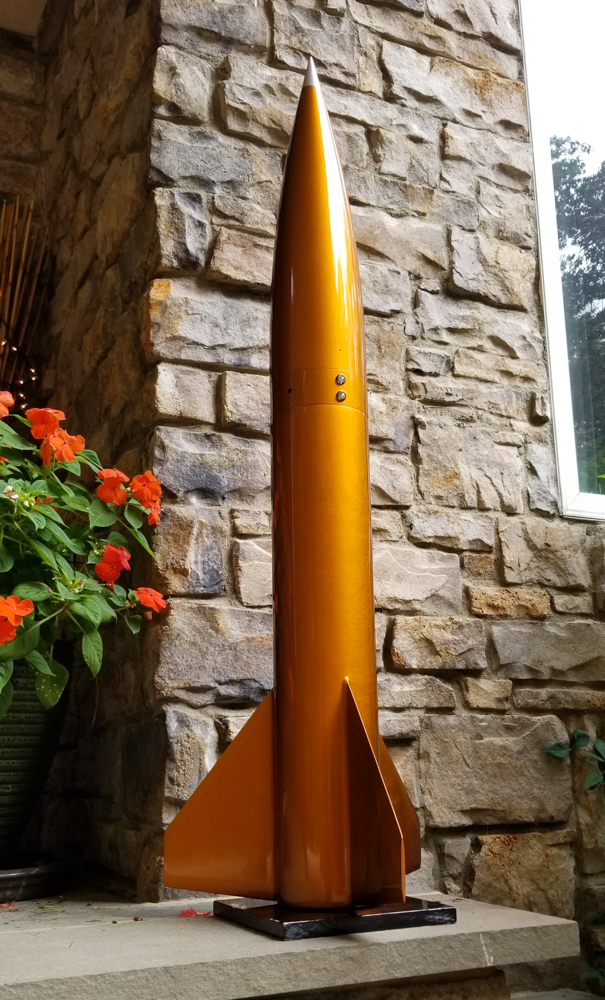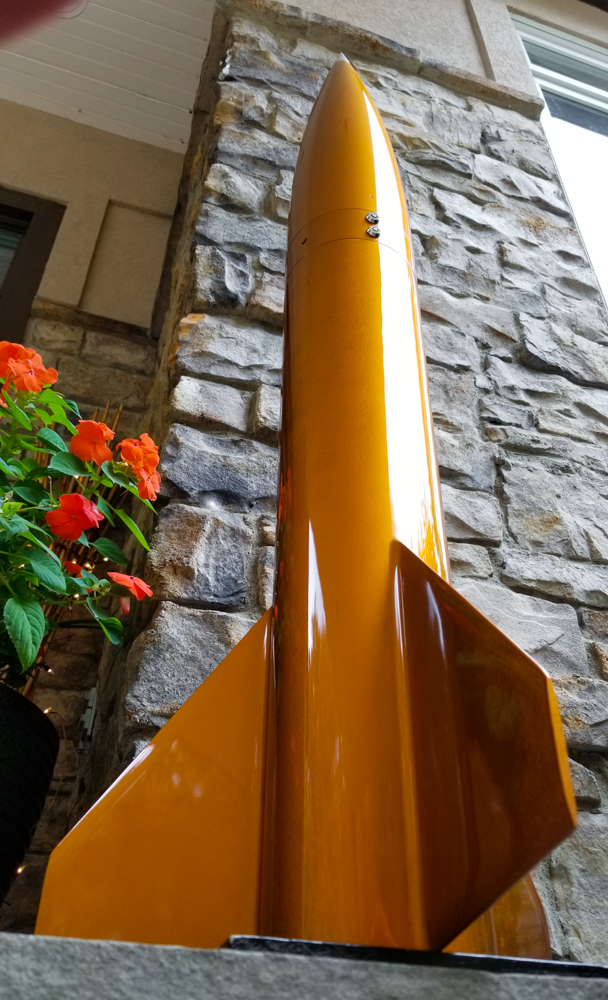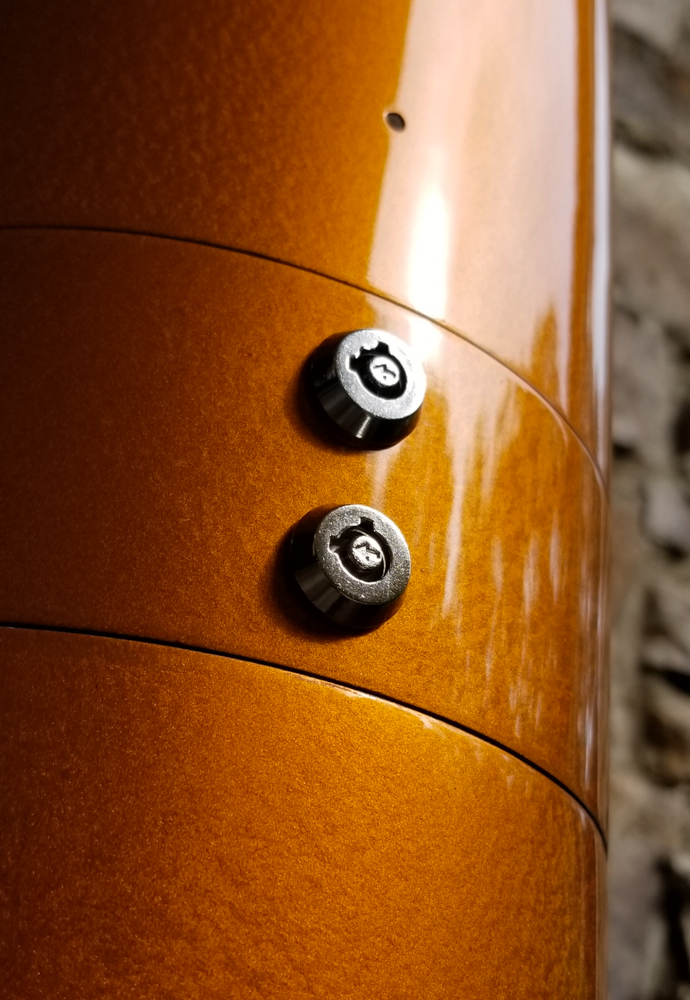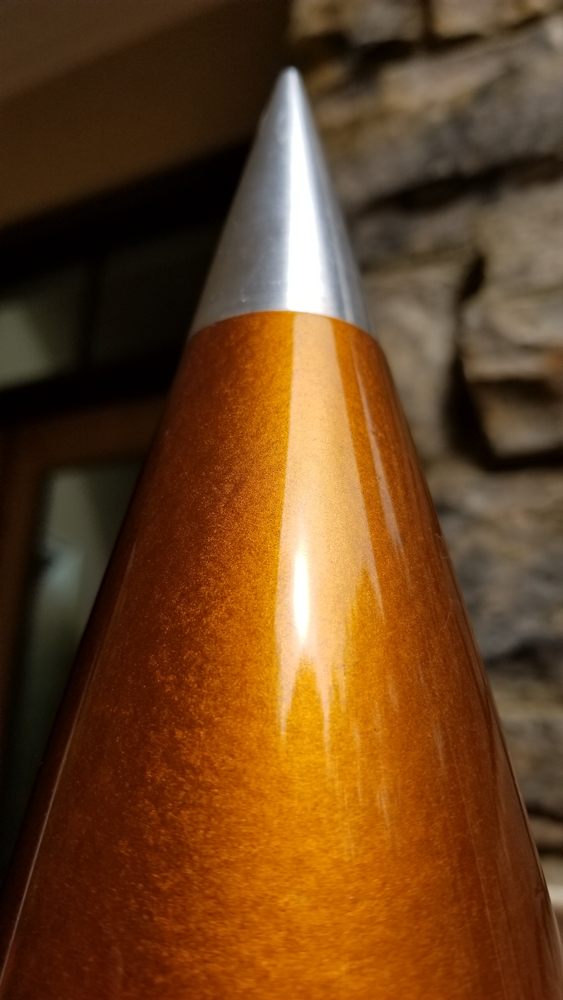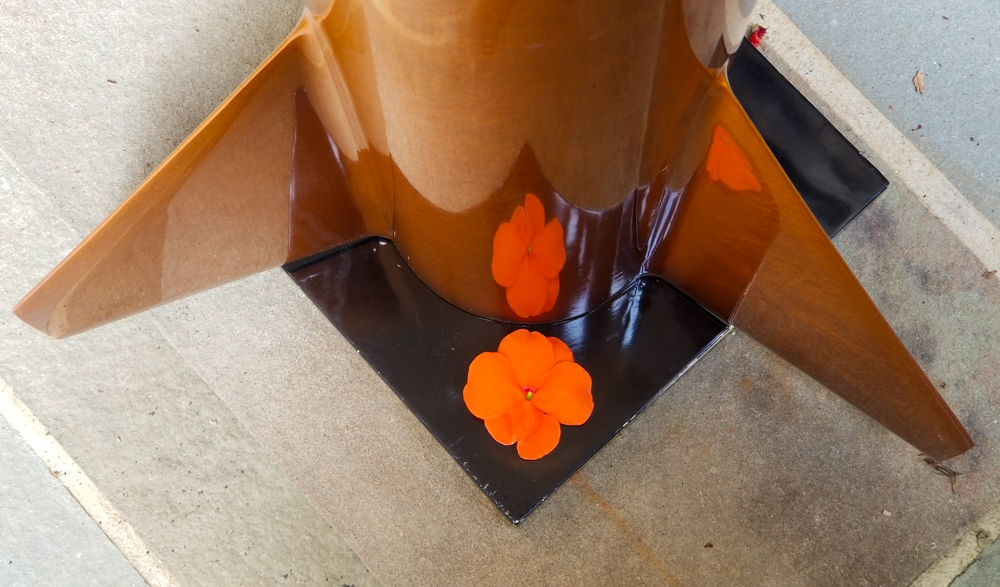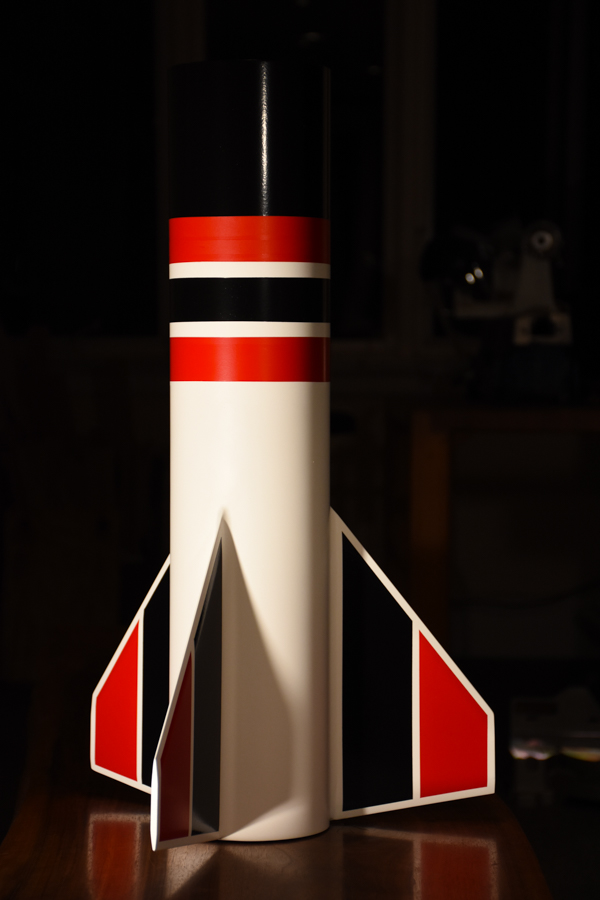Nathan
☢
- Joined
- Apr 19, 2012
- Messages
- 2,230
- Reaction score
- 755
I originally designed this rocket to be used with a Jolly Logic Chute Release. But after crashing twice and being repaired twice, I no longer use JLCR's. Instead, I bought a new nose cone and upgraded this rocket to head-end dual deploy. The switch band now makes it 2 inches taller so it is no longer quite exactly to scale to the original LOC Onyx. It has been repainted with Duplicolor Burnt Orange Metallic lacquer, 4 coats of clear lacquer, wet sanded, and polished. Not as fancy as the original 3 color paint job, but still looks pretty good.
